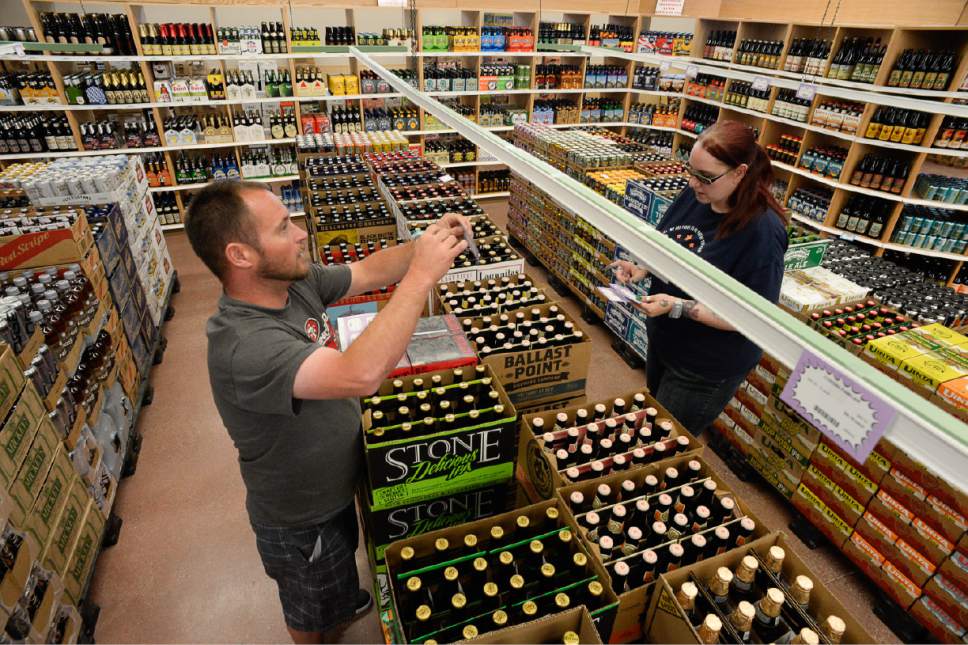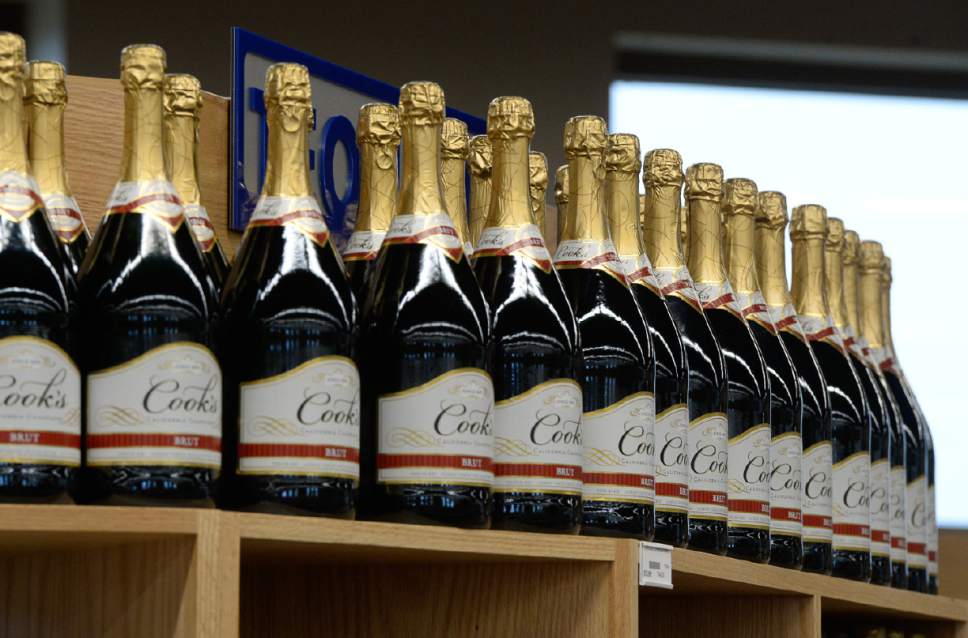This is an archived article that was published on sltrib.com in 2017, and information in the article may be outdated. It is provided only for personal research purposes and may not be reprinted.
Thrifty drinkers will want to shop Utah state liquor stores Friday because booze prices will go up come Saturday.
Blame the price hike on a new law that increases the state markup on wine and spirits from 86 percent to 88 percent.
The markup on heavy beer sold in liquor stores will rise from 64.5 percent to 66.5 percent.
"Employees at every state liquor store will be working before and after regular business hours, switching out price tags to make this happen," said Cade Meier, deputy director of the Utah Department of Alcoholic Beverage Control.
It's a major undertaking as the DABC has 10,000 products or SKUs in the state liquor system, Meier said. The average liquor store carries 2,000 to 2,400 products.
The DABC purchasing department has been working with liquor suppliers on the price hike. A few companies have elected to give the state a better price per case so that the consumers don't feel the hit on their favorite bottle of liquor, Meier said. Those instances are rare and "most prices will increase."
Even before the higher tax — approved by the Legislature as part of a massive alcohol-reform package — Utah consumers already paid the highest markup on wine and the sixth highest on spirits among the country's 17 liquor-control states and one county.
The additional money brought into state coffers will pay for new drinking prevention and training programs in eighth and 10th grades, as well as for owners and managers of bars and restaurants, and employees who are caught selling to underage patrons.
Another major alcohol-service change, related to the markup, also takes effect Saturday. It involves the loosening of the state barrier — aka the "Zion Curtain" — requirement, intended to block children from seeing drinks being mixed. Restaurants can now choose to keep the 7-foot opaque barrier; create a 10-foot buffer from the bar where minors are not allowed; or build a half-wall or railing that creates a delineation between the dining and liquor-dispensing areas.
In return for loosening the "Zion Curtain" restrictions, the state boosted its markup.
All restaurants would have to implement one of the dispensing-area options, even older restaurants that were previously exempted from the "Zion Curtain" mandate because they were serving alcohol before 2009, when it was enacted.
Restaurant owners have until July 2022 to comply with the barriers and designated dispensing-area rules.
The DABC says there "hasn't been a rush" of restaurants asking to make the switch. A few owners — including those from Current Fish and Oyster in Salt Lake City and Bandits Grill and Bar in Cottonwood Heights — are planning to tear down the walls sometime after close of business Friday and before opening on Saturday.
At Somi Vietnamese Bistro in Sugar House, employees have been mixing and pouring alcoholic drinks in the backroom since it opened 19 months ago, said owner Michael Eng. In the coming weeks, Eng hopes to get approval from the DABC to reconfigure a portion of the waiting area and one or two booths to create a new buffer area.
"Consumers must be able to see what we do and feel good about what they drink," Eng said, "and a good bartender is part of the show."
Saturday will bring other tax increases, too
New Utah laws taking effect Saturday will raise some taxes besides those on alcohol.
That includes increasing the fee Utahns pay on every cellphone and landline by an extra 56 cents a month to help upgrade aging 911 and police radio systems.
Legislative fiscal analysts estimate that change, contained in SB198, will cost Utah residents and businesses up to $19.4 million per year.
Also taking effect is SB276 to start expected automatic gasoline tax hikes sooner, and allow them to rise faster. Hikes won't hit immediately, but legislative analysts predict it will increase taxes about 0.6 cents per gallon on Jan. 1, 2019, and by 1.2 cents a gallon the next year. The current state gasoline tax is 29.4 cents a gallon.
For an individual driving 12,000 miles per year and getting 20 miles to the gallon, this could be about $3.60 per year in 2019 and $7.20 per year in 2020, analysts said.
— Lee Davidson









